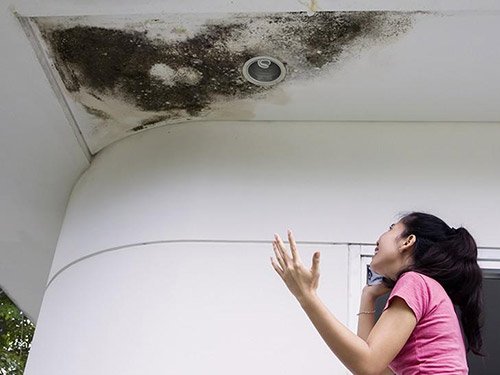Waterproof membranes are designed to keep buildings dry and protected. However, despite their purpose, they often fail. When this happens, the damage can be expensive and long-lasting. The good news is that most failures are preventable. By understanding the main causes, you can take the right steps to avoid problems and extend the life of your waterproofing system.
1. Poor Surface Preparation: The Root of Most Failures
Let’s start with the most common issue—poor preparation. Before applying any membrane, the surface must be clean, smooth, and dry. Unfortunately, many installers rush this step. As a result, the membrane cannot bond properly. This leads to gaps, peeling, and eventually, leaks.
Imagine painting over dust and expecting the paint to stick—it’s the same principle. Cracks, debris, or moisture prevent the membrane from forming a strong seal. To avoid this, always allow enough time to prepare the surface properly. Doing the job right the first time prevents costly repairs later.
Moreover, failure to prime the surface or uneven application also leads to weak spots. These areas are more likely to crack under pressure or shift with building movement. That’s why attention to detail is critical during preparation.
2. Choosing the Wrong Waterproof Material
Not all membranes are created equal. Some are designed for roofs, others for basements, and still others for wet rooms. If you choose the wrong product for the job, it’s only a matter of time before problems start.
For example, bitumen membranes work well on flat roofs but may crack in extreme temperatures. Similarly, EPDM rubber can shrink when exposed to UV light over long periods. Cementitious coatings, though durable, can deteriorate if exposed to freeze-thaw cycles.
Each material has its strengths and weaknesses. Therefore, it’s important to consult with professionals before selecting a product. The right choice will match your climate, surface type, and structure.
3. Errors During Installation
Even the best materials fail if they are not installed correctly. Waterproofing is a skilled trade. Unfortunately, many installations are done by workers without proper training or supervision. This leads to thin patches, poor overlaps, and weak seams.
For example, if overlaps are not sealed properly, water will eventually seep through. Likewise, applying too little material reduces protection. Over time, these mistakes open the door to water intrusion.
This is why working with certified waterproofing professionals matters. Their experience ensures correct installation and fewer future problems.
4. Environmental Stress and Aging
Waterproofing membranes must endure a lot—sun, wind, rain, snow, and more. Over time, these elements break down even the toughest materials.
Take UV radiation, for instance. Constant exposure dries out bitumen and makes rubber brittle. Once the membrane cracks, water finds its way in.
Also, temperature changes cause materials to expand and contract. Without flexibility, cracks form quickly. For flat roofs especially, standing water adds pressure and speeds up wear.
To combat this, consider membranes with UV resistance and flexibility. Additionally, regular inspections help catch wear and tear early, before serious damage occurs.
5. Mechanical and Chemical Damage
Sometimes, membranes are damaged after installation. Construction tools, foot traffic, or chemical exposure can puncture or weaken the waterproof layer.
This damage often goes unnoticed until it’s too late. Water slowly enters, spreads, and causes mold, decay, and insulation failure. In some cases, the building’s structure may even be compromised.
To prevent this, it’s essential to protect membranes during ongoing construction. Place walk paths, avoid dragging tools, and limit exposure to harsh chemicals.
6. Incompatible Materials and Adhesive Failure
Another key issue is using incompatible products. For instance, if the adhesive or primer doesn’t match the membrane, it won’t bond correctly. This results in bubbles, blisters, or peeling layers.
These small failures grow over time. Water slips under the membrane, and once it starts, the damage spreads quickly.
Always follow the manufacturer’s instructions. Stick to complete waterproofing systems where the membrane, primer, and adhesives are designed to work together.
7. Lack of Maintenance
Even well-installed waterproof systems need regular care. Without inspection and maintenance, small issues go unnoticed. Over time, dirt buildup, UV exposure, or blocked drainage can lead to failure.
Regular checkups allow you to catch problems early. Cleaning debris, reapplying protective coatings, and checking seams can add years to your waterproofing system’s lifespan.
Your Best Defense: Work with Professionals
Waterproof is not just a product—it’s a process. From surface prep to material choice to long-term care, each step matters. While many failures are due to poor workmanship or rushed jobs, they can be avoided.
If you’re building or renovating, don’t cut corners. Work with certified waterproofing specialists who understand your needs and can recommend the right solutions. Whether you’re protecting a commercial roof, a basement wall, or a balcony, expert advice makes all the difference.
Water damage is expensive, but it’s also preventable. By learning from common failures and investing in the right waterproofing solution, you can protect your building for years to come.
Ready to Upgrade Your Waterproof?
We offer advanced waterproofing systems that are:
- UV-resistant and highly durable
- Designed for your specific environment
- Installed by trained professionals
- Backed by a long-term performance guarantee
Don’t wait for water damage to strike. Contact us today for a free consultation and discover how we can help protect your property the right way.


